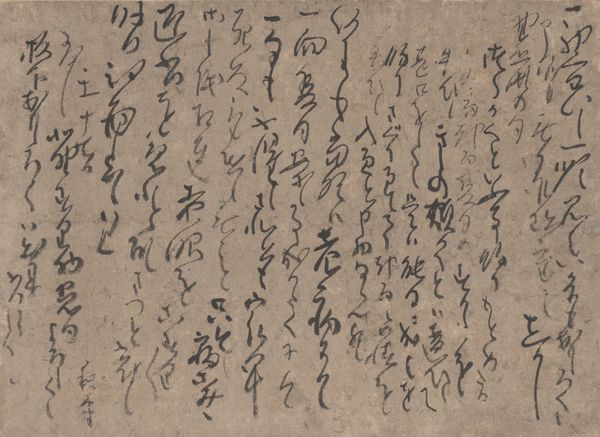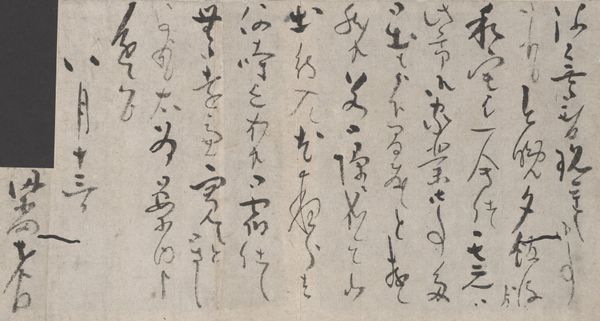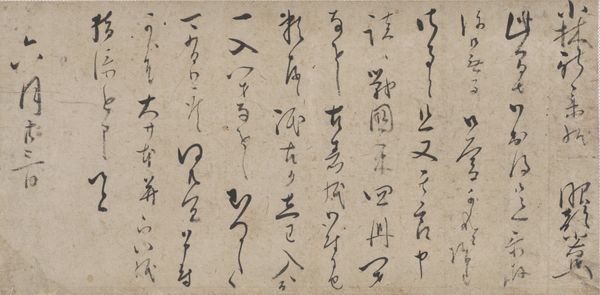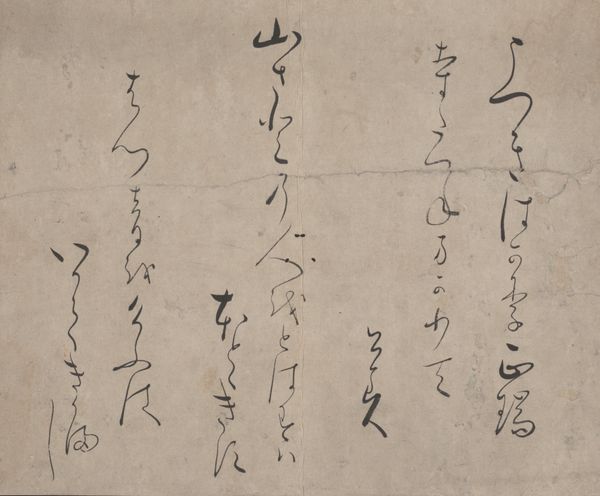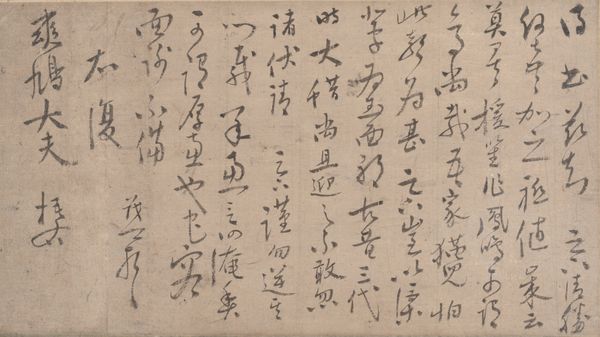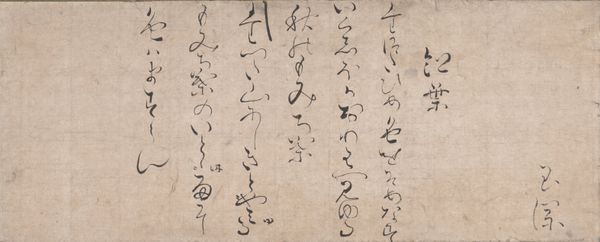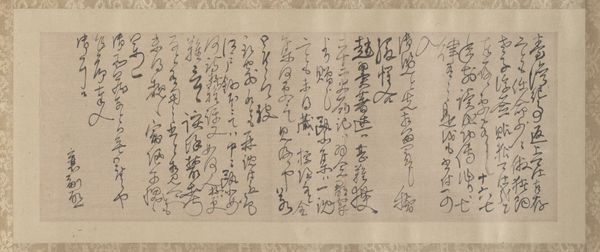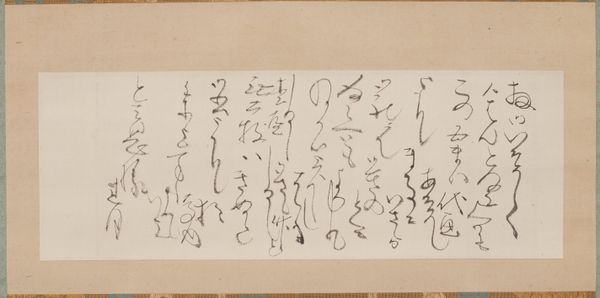
paper, ink
#
asian-art
#
paper
#
ink
#
line
#
calligraphy
Dimensions: 6 5/16 × 17 1/16 in. (16.03 × 43.34 cm) (image)36 7/8 × 20 13/16 in. (93.66 × 52.86 cm) (mount, without roller)
Copyright: Public Domain
Editor: Here we have *Three Waka* from around the 18th century, crafted by Ike (Tokuyama) Gyokuran. It's ink on paper, part of the Asian art collection. My first impression is of delicacy; the lines are so fine and flowing. What do you see in this piece? Curator: Beyond the aesthetic grace, I see a confluence of artistic, social, and intellectual currents. Calligraphy in this period was far more than decorative; it was a potent signifier of status and cultural capital. Gyokuran, as a woman artist in a traditionally male-dominated field, would have faced significant institutional barriers. The act of creating and displaying these poems became a powerful form of cultural participation. Editor: Cultural participation? Can you expand on that? Curator: Certainly. The 'waka' form itself is laden with historical weight, associated with the Imperial court and elite literary circles. By engaging with this form, Gyokuran subtly positioned herself within that lineage. Think about the very act of creating and then displaying works like this, which challenges social expectations about who gets to create art. Was the intended audience limited? How were these poems viewed by broader social classes? Editor: I never considered the audience before! I guess it's easy to view art from the past as this solitary, timeless creation, forgetting the social ecosystem surrounding it. Did the choice of paper, ink and lines affect it in any way? Curator: Absolutely! The materials used signify sophistication and access. Notice how controlled her strokes are while using simple elements, something that directly mirrors the kind of social mobility that was restricted at the time. Gyokuran challenges the very notion of power and what defines her identity. It's interesting how the simplicity has an additional, deeper symbolic layer. Editor: This is amazing, my perspective on the artwork has been transformed. I will be asking this question every time from now on! Curator: Glad to open that for you; considering those dynamics truly enriches our understanding.
Comments
No comments
Be the first to comment and join the conversation on the ultimate creative platform.
